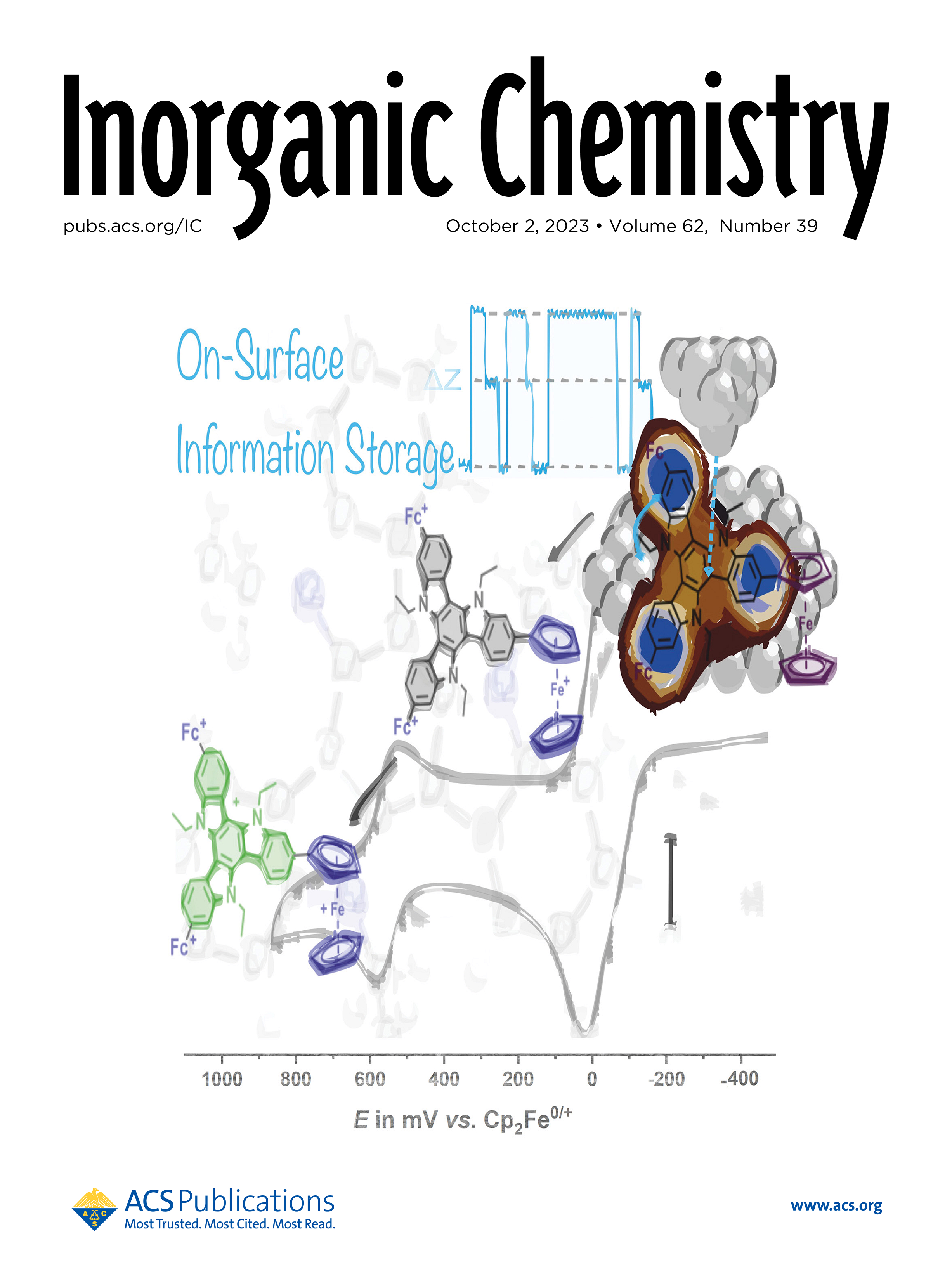
Lars's paper online (Inorg. Chem. 2023)
Ferrocenyl-Substituted Triazatruxenes: Synthesis, Electronic Properties, and the Impact of Ferrocenyl Residues on Directional On-Surface Switching on Ag(111)
A. Vogelsang, T. Birk, F. Paschke, A. Bauer, V. Enenkel, L. M. Holz, M. Fonin, and R. F. Winter
Inorg. Chem. 2023, 62, 16236, https://doi.org/10.1021/acs.inorgchem.3c03009
We report on seven new ferrocenyl-(1, 3)- and ferrocenyl-ethynyl-modified N,N′,N′′-triethyltriazatruxenes (EtTATs) 4−7 as well as the dodecyl counterpart 2 of compound 1 and their use as molecular switching units when deposited on a Ag(111) surface. Such functional units may constitute a new approach to molecule-based high-density information storage and processing. Besides the five compounds 1−3, 6, and 7, where the 3-fold rotational symmetry of the triazatruxene (TAT) template is preserved, we also included 2-ethynylferrocenyl-TAT 4 and 2,2′-di(ethynylferrocenyl)-TAT 5, whose mono- and disubstitution patterns break the 3-fold symmetry of the TAT core. Voltammetric studies indicate that the ferrocenyl residues of compounds 1−7 oxidize prior to the oxidation of the TAT core. We have noted strong electrostatic effects on TAT oxidation in the 2,2′,2′′-triferrocenyl-TAT derivatives 1 and 2 and the 3,3′,3′′-isomer 3. The oxidized complexes feature multiple electronic excitations in the near-infrared and the visible spectra, which are assigned to dδ/δ* transitions of the ferrocenium (Fc+) moieties, as well as TAT → Fc+ charge-transfer transitions. The latter are augmented by intervalence charge- transfer contributions Fc → Fc+ in mixed-valent states, where only a part of the available ferrocenyl residues is oxidized. EtTAT was previously identified as a directional three-level switching unit when deposited on Ag(111) and constitutes a trinary-digit unit for on- surface information storage. The symmetrically trisubstituted compound 6 retains this property, albeit at somewhat reduced switching rates due to the additional interaction between the ferrocenyl residues and the Ag surface. In particular, the high directionality at low bias and the inversion of the preferred sense of the on-surface rocking motion with either a clockwise or counterclockwise switching sense, depending on the identity of the surface enantiomer, are preserved. Unsymmetrical substitution in mono- and diferrocenylated 4 and 5 alters the underlying ratchet potential in a manner such that a two-state switching between the two degenerate surface conformations of 4 or a pronounced suppression of switching (5) is observed.
